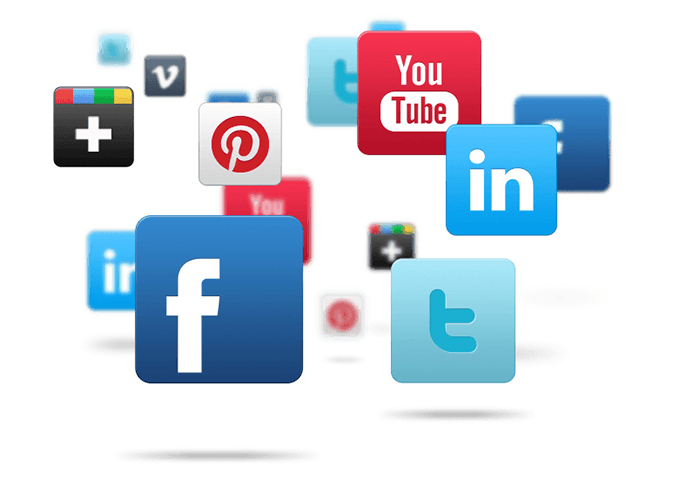Over the last several years, owners of ecommerce businesses have been increasingly looking to social media marketing to increase their sales. Understanding how and why customers use social media is the key to making these efforts a success.
This is the first in a series of posts on how social media and marketing intersect, including tips that will optimize the effectiveness of your efforts on the most popular social networks.
Before we dive into marketing techniques, today’s article takes a look at the consumer and how she is already using social media to explore products, make purchase decisions, and to engage with brands.
Product sharing
At one time or another we’ve all had friends share product links over social media. There are a few key reasons this is done.
To get an opinion
Before buying an item, sometimes shoppers will share the link in their social networks so friends can help them decide. In his book, Kick Ass Social Commerce, John Lawson discusses an experiment he did when he was trying to decide which smartphone to get.
He asked his Facebook friends, “Which phone should I get? iPhone, Droid, or Windows?” Within a few hours he had 38 responses from his network, all giving their detailed opinion, some with product links.
Lawson points out that “rather than researching the facts about which item will best suit their needs, [consumers] directly ask their social networks for it instead.”
Nielsen conducted a Global Trust in Advertising and Brand Messages survey in 2013 which asked, “To what extent do you trust the following forms of advertising?” A whopping 84% of respondents claiming to completely/somewhat trust ‘Recommendations from people I know’ – the highest ranked trust score in the survey. Ads on social networks were trusted roughly half as much, at 48%.
To show off
When someone makes a special or unusual purchase, he may share the link on social media to announce it. I’ve seen friends share links to everything from a new car to a Vitamix blender. When people get excited about their new toys, they want to connect with other people to share the experience.
To be nostalgic
Have you ever posted a ‘Throw Back Thursday’ image on your social media sites? You aren’t alone. #TBT is the all-time 4th most popular hashtag on Instagram. (If you haven’t, the basic concept is to invoke nostalgia by sharing an old picture of yourself or someone/something in your life.)
Just last week, a 1991 Sizzler commercial resurfaced on Reddit and was picked-up by Esquire’s Dave Holmes. People are so mesmerized by the video that it’s had over 1.7 million views. Now be honest, when was the last time you actually went to Sizzler? For me, it’s been over 20 years – but going to Sizzler isn’t the point. Trying to reconcile my memories of the 1990s with this bizarre video time capsule captivated me and triggered my nostalgia. I asked myself, “Did I ever look like that? Was I that much of a dork? Was I that excited to eat a buffet?”
Nostalgia is actually a much studied and powerful emotion. In an interview with the New York Times, John Tierny, a columnist with Science Times, explained why. “It counteracts loneliness; it counteracts anxiety. Oddly enough, by looking wistfully back on the past it makes you more optimistic about the future. It gives you a sense that there is continuity in your life. It reminds you that there are people in your life who are important to you – that you’ve got this social support, and it gives your life more meaning.”
By the way, nearly everything sold on Etsy is a nostalgia item – either purely vintage/antique or handmade with grandma’s techniques.
To amuse
‘Poo Pourri’, a fragrance you spritz in the toilet to mitigate odors, is a brilliant example of an original product that went viral with social network sharing.
In its first week on YouTube, the video had over 278,000 social media shares. To date, the video has been viewed over 32 million times. While the company was profitable in its second month, well before its iconic video was launched, it was social media that ensured Poo Pourri’s legacy.
What you can do
Make it as easy as possible for people to share links to your product. If you sell on marketplaces (eBay, Amazon, Etsy, etc.), the social sharing buttons are already programmed for you. If you sell on your own website, make sure to have social sharing buttons on each product page. The easier it is for customers to share, the more likely they will.
You can also include a call to action on your shopping cart. For example, you could offer 10% off this purchase if a customer shares the link on social media, and give them an instant coupon if she does.
Product discovery
When it comes to product discovery, Pinterest has no competition among the other social networks. Pinterest users are not generally looking to buy an item, rather they look for inspiration. They follow people with similar interests, and when those people create or share a ‘pin’ (images that usually have a website or product link), it will show-up in your feed in real time. Pinterest now also “suggests” pins based on your interests, which it learns over time as you use the site.
For example, I use Pinterest primarily for recipes and gardening tips. My feed is filled with recipes, gardening tips, and healthy dog treat ideas (and yes, I know I don’t have a dog – yet). In this screenshot of my feed, note the product available for sale (outlined in purple) and how it blends in with the other pins. It’s subtle, a cute picture, and an interesting topic for me. If I had a dog already, I would certainly be compelled to click through and I would probably buy the book.
When I logged into Pinterest, I wasn’t looking for a dog cookbook. It just appeared, and now I want it.
See how that works?!?
http://pinterest.com/source/Etsy.com
Wish lists
Last year at an eBay Meetup event in San Jose, I met a teenage girl who had come with her aunt to learn about marketing an eBay business. We got to talking, and she told me that she uses Pinterest all the time. Her favorite thing to do was to put things on a ‘Wish List’ board she had created so her friends and family knew what she wanted for her birthday and for holidays.
It turns out, she isn’t alone. Check for yourself! Go to Pinterest.com and search for “Wish List” (filter your search by boards; it defaults to search by pins). There you will find similar boards by others, real people engaging with actual products they want someone to buy for them.
Contests & UGC
UGC stands for User Generated Content.
UGC is usually created in response to a contest or incentive. An example of UGC for a company to use in social media is BubbleFAST’s annual ‘BubbleWeen’ contest.
They ask customers to send in pictures of themselves, their kids, or their pets in Halloween costumes made from BubbleFAST‘s shipping supplies. This always gives them nice social media exposure, as the contest entrants share their pictures with their own social networks while building visibility for the brand. Everyone has fun, and some customers win prizes.
Complaints: product & customer service
It’s becoming increasingly common for customers, especially millennials, to take their complaints to social media outlets instead of contacting the company directly. A recent example is below in which a young lady was disappointed that the prom dress she ordered did not look like the picture.
What I ordered v.s. What I got pic.twitter.com/tXBCRczduF
— Syd (@sydney_luggerr) April 13, 2015
A recent study by VB Insights found that “we complain 879 million times/year” on social media. Some people complain because they are simply upset and want to spread the word about a bad product or service. Others may complain because they want customer service to fix something.
A 2013 study by Lithium Technologies found that 70% of users expect to hear back from the brand they are engaging with on Twitter – 53% want to hear back within the hour. If they are complaining about the brand, then 72% want to hear back within the hour.
People are busy and don’t want to take the time to wait on hold on a customer service phone call. Complaining about problems on Twitter and other social sites is often much faster.
Final thoughts
As a business owner you need to be aware of how and why customers use social media throughout the purchase cycle. Even if your business has no presence, customers will talk about you. It may be worth investing in some social listening tools, like mention, to find where people are talking about you even if they haven’t tagged you in their post.



